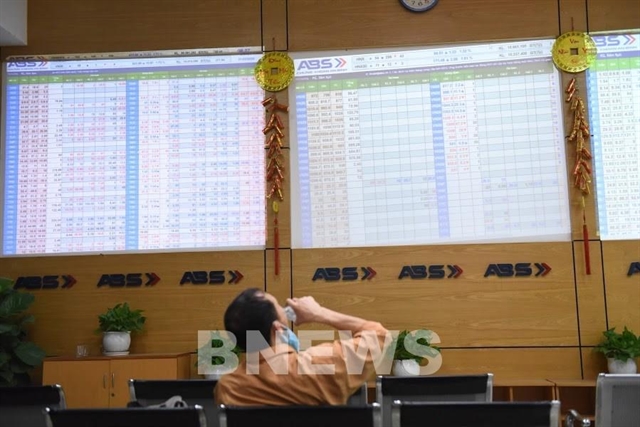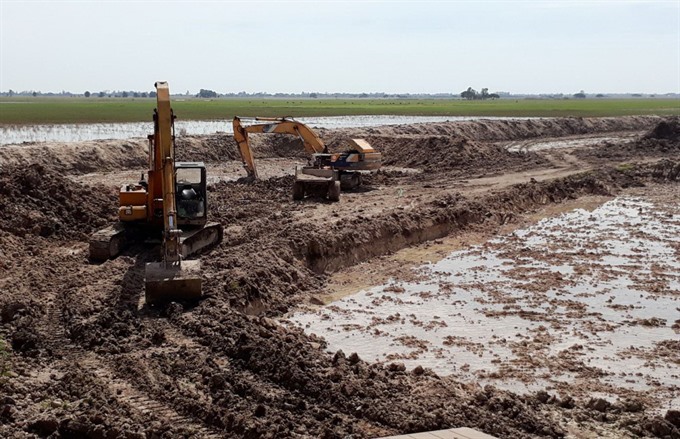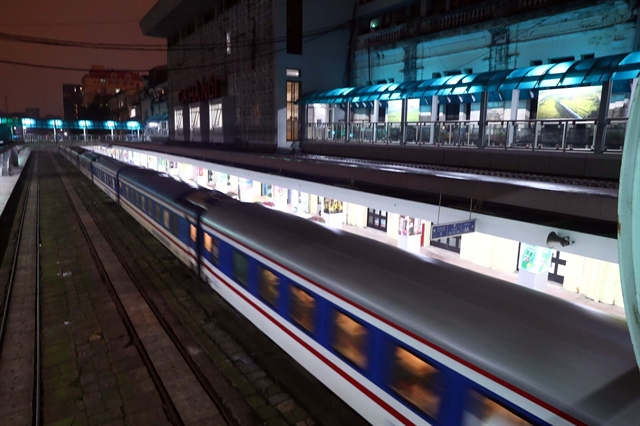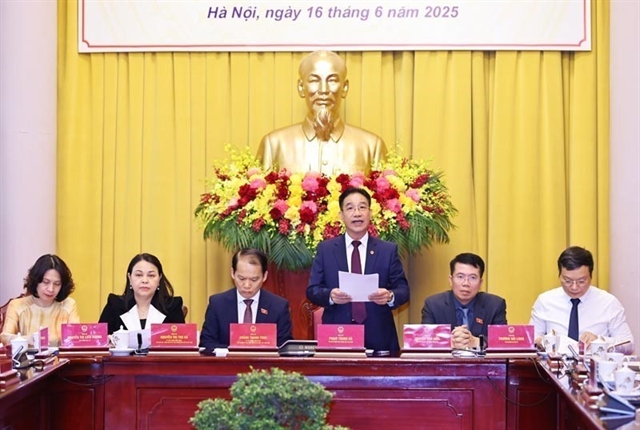 Society
Society

Diệp Thị Nguơn, a farmer in Long An Province, says she decided to breed tra fish in recent years because of the anticipated high profits.
 |
| Households in Tân Hưng District in Long An Province dig ponds to breed tra fish on their rice fields. Photo baocantho.com.vn |
LONG AN — Diệp Thị Nguơn, a farmer in Long An Province, says she decided to breed tra fish in recent years because of the anticipated high profits.
She dug five breeding ponds on her farm located on her 15-ha rice field in Hưng Điền B Commune in Tân Hưng District.
“After the first tra fish breeding crop, I plan to dig even more ponds,” Nguơn said, pointing to her rice field.
Fish breeding brings far more profit than cultivation of rice, and takes less hard work, according to Nguơn and other farmers in the province.
Another farmer, who did not want to be named, said he had shifted from rice cultivation to fish breeding because of the profit. “If there are other problems associated with it, I really don’t care,” he said.
With tra fish fetching high prices, more farmers have begun to dig ponds to breed fish, but they are unaware of the financial risk and damage to the land.
Since the end of last year, the amount of land repurposed from rice fields to fish ponds in the province has increased to 800ha, mainly in Tân Hưng District and part of Vĩnh Hưng and Thạnh Hóa districts, according to provincial authorities.
With an output of between five and 20 tonnes of fish per ha, and a price of VNĐ45,000-65,000 per kg, farmers can earn significant profits.
For example, on average, a farmer earns a profit of VNĐ100-300 million per hectare for breeding fish. Some households can earn up to VNĐ1 billion a crop.
On the road along the KT9 canal (from Hưng Hà Commune to Hưng Điền B Commune) in Tân Hưng District, many households can be seen digging fish ponds on their rice fields.
On the KT9 canal, five to seven out of 10 households have shifted from rice cultivation to fish breeding.
“We have one hectare for fish breeding. Each crop only lasts two months, so we can have four to five crops a year,” said Nguơn of Hưng Điền B Commune.
“For the last crop, we earned a profit of more than VNĐ300 million (US$13,155). We plan to expand the fish farming area to 3.5 hectares,” she added.
Risks
Although some farmers have earned high profits, many have suffered financial losses due to a lack of knowledge about farming techniques and experience.
The cost to breed fish on one hectare is around VNĐ200 million ($8,770).
Farmers Lê Trường An of Hưng Điền B Commune said: “After seeing many households make hundreds of million of đồng in a short time, I decided to borrow money to breed tra fish on 1ha. But I lost a lot because I lacked training and experience.”
“Our biggest concern is about output because we depend very much on purchases of traders from the provinces of Tiền Giang, Đồng Tháp and An Giang,” he said.
In addition, the price of fish is often not stable, and sometimes farmers are manipulated by traders who offer low prices or even refuse to buy, according to An.
Worse still, many farmers are not fully aware of the risk and some even rent more land to breed fish.
Tân Hưng District has the largest breeding area of tra fish in Long An Province, according to Nguyễn Vũ Linh, chairman of Hưng Điền B Commune’s People’s Committee.
Although tra fish breeding brings higher income than rice farming, the local authority discourages farmers from the practice because of the challenges related to output.
Nguyễn Thanh Toàn, director of Long An Fisheries Department, said that many farmers had not received technical training and only follow guidance from feed companies or speak to one another.
Many farmers also lack knowledge about the production season and seed quality, resulting in the poor quality of tra fish they breed, Tòan added.
More importantly, wastewater from fish farming is discharged directly into rivers and canals without being treated properly.
Lê Văn Hoàng, director of Long An’s Department of Agriculture and Rural Development, said the department had instructed local agencies to regularly monitor the development of fish breeding and to avoid an oversupply, which would affect the income of local farmers.
In the short term, the province will provide training courses on animal husbandry techniques, as well as disease management and treatment, to ensure a stable output for farmers, he said. The province will also give guidance to farming households on how to treat wastewater. — VNS




